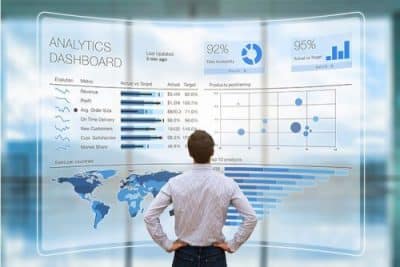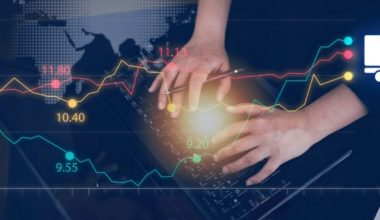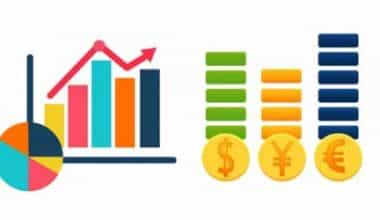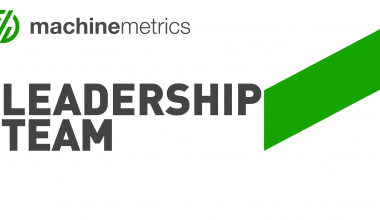In today’s economy, business analytics and intelligence is a potent instrument. Organizations across industries are creating massive volumes of data, which has increased the demand for experts who can comprehend and analyze that data.
According to a recent MicroStrategy survey, firms around the world are leveraging data to
- Improve process and cost efficiency (60 percent)
- Strategize and implement change (57 percent)
- Keep track of and improve financial performance (52 percent)
According to the research, 71 percent of worldwide organizations expect their investments in analytics to accelerate over the next three years and beyond.
Given this tendency, learning the intricacies of business analytics can help you develop your career and make smarter judgments at work.
Using data analytics to exert influence in a company is a highly effective strategy. Before delving into the benefits of data analysis, it is necessary to define the phrase “business analytics.”
What Is Business Analytics?
Business analytics is the process of deriving meaning from data using quantitative methodologies to make educated business decisions.
Business analysis can be done in three ways:
- Descriptive analytics: The analysis of historical data to detect trends and patterns.
- Predictive analytics: This is the use of statistics to estimate future outcomes.
- Prescriptive analytics: The use of testing and other approaches to decide which outcome will produce the best results in a specific situation.
The method to use is determined by the business circumstances at hand. Here are some examples of how organizations have benefited from adopting business analytics.
The Benefits of Business Analytics
#1. Better-Informed Decision Making
When addressing a critical strategic decision, business analytics can be a significant resource.
When the ride-hailing company Uber upgraded its Customer Obsession Ticket Assistant (COTA) in early 2018. It is a tool that uses machine learning and natural language processing to help agents improve their speed and accuracy when responding to support tickets. It uses prescriptive analytics to determine whether the new version would be more effective than the previous version.
The organization was able to identify that the improved product resulted in faster service, more accurate resolution recommendations, and greater customer satisfaction levels through A/B testing—a means of evaluating the consequences of two different options. These discoveries not only sped up Uber’s ticket settlement procedure but also saved the firm millions of dollars.
#2. Increased Revenue
Companies that embrace data and analytics projects might benefit financially significantly.
According to McKinsey research, firms who invest in big data see a six percent average gain in earnings. This increases to nine percent for five-year investments.
In line with this trend, a recent BARC study discovered that organizations that can quantify their gains from data analysis report an average 8% rise in sales and a 10% decrease in costs.
These findings demonstrate the clear financial payback that can result from a strong business analysis strategy—one that many companies can profit from as the big data and analytics market expands.
#3. Increased Operational Efficient
Analytics may be utilized to improve business operations in addition to financial gains.
According to a recent KPMG analysis on emerging infrastructure trends, many businesses are already adopting predictive analytics to anticipate maintenance and operational concerns before they become larger problems.
A polled mobile network operator stated that it uses data to predict disruptions seven days in advance. Armed with this knowledge, the company can prevent interruptions by more properly timing maintenance, allowing it to not only save on operational costs but also ensure that assets are performing optimally.
Why Should you Study Business Analytics?
Taking a data-driven approach to business can have huge benefits, yet many firms report a shortage of experienced personnel in analytics areas.
LinkedIn lists business analysis as one of the top skills employers need in 2019, and the Bureau of Labor Statistics expects operations research analyst employment to grow at a rate of 27 percent through 2026—much faster than the national average for all occupations.
A lot of individuals can crunch statistics, but I think they’ll be in pretty limited positions unless they can help understand those findings in the context in which the business competes. If you want to capitalize on the demand for data-driven professionals, completing an online course can help you improve your skillset and advance your career.
You can construct an analytical framework that can be used in your everyday decision-making. Also, you can help your company prosper by learning how to spot trends, test hypotheses, and conclude from population samples.
“If you don’t use the data, you’ll lag,” Hammond said. “People with those qualities, as well as an awareness of business settings, will add the most value and have the most impact.”
Business Analytics Examples
Business analytics has applications in a wide range of industries. Some businesses are coming up with novel methods to leverage big data to improve the customer experience and maximize earnings. Here’s an example of business analytics in action:
Fast-food corporations have begun to use BA to improve the efficiency of their locations. Who wants to waste time in a fast-food drive-thru? These businesses can enhance efficiency during peak hours by monitoring how busy the drive-thru is. When there is a long line, the digital order boards fluctuate. They start by emphasizing products that can be prepared quickly. This results in simpler orders that may be completed more rapidly. Slower items with bigger margins are featured when the lines are short. As a result, the store can adapt to real-time needs and increase efficiency.
Other sorts of BA apps go beyond simply reacting to the present circumstance. These methods assist firms in predicting which customers are less likely to return. They can then focus advertising and promotions to these customers to increase client retention. Here are some examples of predictive analytics in the workplace:
Casinos employ BA to increase earnings and retain consumers. Though the house usually wins most of the time, players usually need to win enough to have fun and keep playing. Otherwise, players may lose interest and cease to return. Casinos can discover which clients spend the most money by tracking their expenditure. They can provide more incentives to these high-spending customers to keep them coming back. The obtained data also assists these resorts in determining which amenities are the most popular.
Data Analytics vs. Business Analytics
Data analytics is a broad umbrella word that refers to the science of analyzing raw data to transform that data into meaningful information from which trends and metrics can be exposed. While both business analytics and data analytics aims to improve operational efficiency, business analytics is more focused on business applications. Whereas data analytics has a broader focus – both business intelligence and reporting, as well as online analytical processing (OLAP), fall under the data analytics umbrella.
In the data analytics process, data scientists, data analysts, and data engineers collaborate to acquire, integrate, and prepare data for the development, testing, and revision of analytical models, ensuring accurate findings. The focus of data analytics for business purposes is on specific business operations questions.
Data Science vs. Business Analytics
Data science is a multidisciplinary field that studies structured and unstructured data using scientific systems, methods, and algorithms to determine where information comes from, what it means, and how it can be transformed into a valuable resource in the development of information technology strategies.
A good data science course syllabus will teach you how to integrate data analysis, statistics, machine learning, and related methodologies to manage and understand the data deluge that has resulted from the rise of information technology. Data scientists are responsible for presenting digital information in a way that demonstrates its practical worth in data-driven decision-making. Yet, they do not often strive to answer particular questions in the same way that business analysts do when looking for business analytics insights.
Business Analytics vs. Business Intelligence
While business intelligence and business analytics perform comparable functions and can be utilized interchangeably, both methods differ fundamentally in their focus. Business intelligence analytics focuses on descriptive analytics, which combines data collection, storage, and knowledge management with data analysis to review prior data and provide new views on currently available information.
Prescriptive analytics is the emphasis of business analytics, which employs data mining, modeling, and machine learning to predict future outcomes. Business intelligence essentially answers the questions, “What happened?” and “What needs to change?” And business analytics answers the question, “Why is this happening?” “What if this trend continues?” “What will happen next?” and “What if we alter something?” The structure and purpose of business analytics and business intelligence solutions tend to overlap.
Business Analytics FAQ’s
What is the scope of business analytics in future?
Business analytics is projected to have a substantial impact on, among other things, marketing, sales, customer experience, finance, risk management, human resources, and social media operations. People who understand these analytics in depth are better positioned to be industry leaders.
Is business analytics easy to learn?
Harnessing the power of analytics in business is now easier than ever thanks to technological advancements and an increase in available data.
Is there a lot of math in business analytics?
Contrary to common opinion, business analytics does not necessitate substantial coding, math, or computer science training. It’s an excellent career for those who appreciate tackling complex challenges and providing practical solutions based on real-world company data.
- Predictive Analytics Tools and Software: Best 15+ Tools
- Predictive vs Prescriptive Analytics, Explained!!! (+ Detailed Guide)
- Predictive Analytics: Definition, Examples, and Benefits
- Highest paying management jobs
- Predictive Analytics Tools and Software: Best 15+ Tools
- Types of Analytics: How to Apply them in any Business






